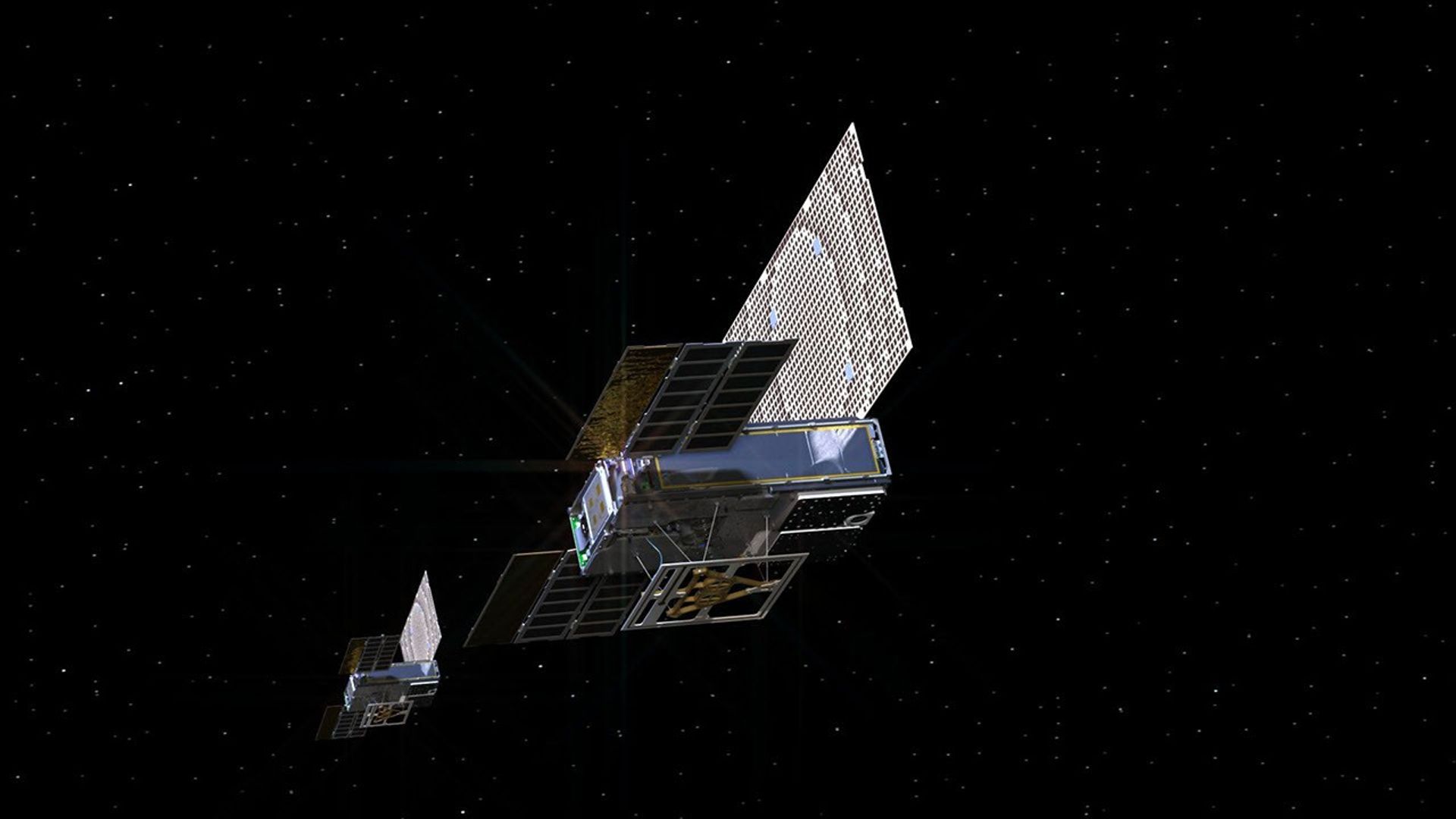Mars Cube One (MarCO) was a space mission developed by NASA, notable for being the first pair of CubeSats to participate in an interplanetary mission. MarCO was launched concurrently with NASA's InSight Mars lander on May 5, 2018, with the primary objective of providing real-time communication relay during InSight's landing on the Martian surface. The mission was designed as a technology demonstration project to test the operational capabilities of small satellites in deep space.

An Artist's Rendering of NASA's Twin Mars Cube One (MarCO) Spacecraft As They Fly Through Deep Space (NASA)
Mission Summary
The MarCO mission consisted of two small satellites. Named MarCO-A (EVE) and MarCO-B (WALL-E), these satellites were launched on the same rocket as the InSight lander but were designed only to fly by Mars, not to land or enter its orbit. Their main task was to relay data from InSight directly to Earth during its landing phase. The MarCO mission had no backup systems, which also served as a test for a risky yet low-cost engineering solution.
Purpose and Objectives
MarCO's fundamental purpose was to prove the viability of CubeSat technology in reaching and operating at distant targets like Mars. In this context, the mission focused on the following objectives:
- The first operational test of CubeSat-class systems in deep space.
- Providing real-time communication relay during the Entry, Descent, and Landing (EDL) phase of the InSight spacecraft.
- Testing next-generation miniature propulsion and communication systems for small satellites.
- Testing the viability of deep space navigation and guidance systems on miniaturized satellite platforms.
Technical Specifications
- Satellite Type: 6U CubeSat
- Launch Date: May 5, 2018
- Launch Vehicle: United Launch Alliance (ULA) Atlas V 401
- Power Source: Lithium-ion batteries supported by solar panels
- Propulsion System: Cold gas propulsion system (miniature thrusters)
- Communication System: Miniature high-gain antenna operating in the X-band frequency range
- Dimensions: Each satellite is approximately the size of a briefcase (approx. 36.6 x 24.3 x 11.8 cm)
Mission Process
After leaving Earth, MarCO-A and MarCO-B undertook a journey of approximately 6.5 months to Mars. During this time, the satellites independently operated their navigation and communication systems. On November 26, 2018, as the InSight spacecraft entered the Martian atmosphere, the MarCO satellites received InSight's data stream and relayed it to Earth in real-time, with an 8-minute light-time delay. Thanks to this relay, NASA was able to monitor the landing process as it happened.
Scientific and Technical Contributions
The MarCO satellites were not designed to collect scientific data; instead, the mission was significant for its engineering tests and evaluation of communication infrastructure. The mission achieved the following technical gains:
- It was proven that deep space CubeSat missions are feasible.
- Miniature propulsion systems and guidance algorithms were successfully tested.
- The first-ever communication relay from deep space originating from a CubeSat was accomplished.
- The viability of low-cost engineering solutions without backup systems was confirmed.
The MarCO mission was successfully completed, and both satellites went silent in their solar orbit after fulfilling their objectives. This mission has paved the way for the use of CubeSats and similar small satellites in future deep space missions for various roles, such as communication relay, exploration, monitoring, and backup system support. Mars Cube One has become a significant milestone, demonstrating that great things can be accomplished with small satellites.

